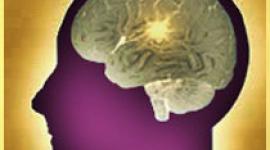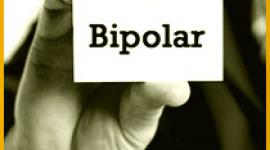The Manic Panic Connection
A report on a presentation1 by Dean F. MacKinnon, M.D.,2, Smooth Sailing, Spring 1998.
 While studying the genetics of affective disorders, Dr. Dean F. MacKinnon has been working with families in which several members have bipolar disorder. Recent analysis of data from a large epidemiological study of the 1980s showed that 20 percent of families affected by bipolar disorder (but only 1 to 2 percent of families in the general population) are also affected by panic disorder. In other words, panic disorder clusters in families affected by bipolar disorder. Dr. MacKinnon is exploring the likely existence of a genetic subtype--perhaps a distinct form of bipolar disorder--that is responsible for the combined disorder (bipolar disorder plus panic disorder). The work may assist researchers in other studies of the genetic transmission of bipolar disorder.
While studying the genetics of affective disorders, Dr. Dean F. MacKinnon has been working with families in which several members have bipolar disorder. Recent analysis of data from a large epidemiological study of the 1980s showed that 20 percent of families affected by bipolar disorder (but only 1 to 2 percent of families in the general population) are also affected by panic disorder. In other words, panic disorder clusters in families affected by bipolar disorder. Dr. MacKinnon is exploring the likely existence of a genetic subtype--perhaps a distinct form of bipolar disorder--that is responsible for the combined disorder (bipolar disorder plus panic disorder). The work may assist researchers in other studies of the genetic transmission of bipolar disorder.
As background, Dr. MacKinnon explained that panic disorder is characterized by panic attacks, with sudden, severe onsets of extreme anxiety. They are self-limited at twenty minutes to one-half hour, with physical symptoms that may include racing heart or palpitations, shortness of breath, dizziness, tingling, and nausea. Psychological symptoms include feelings of derealization [changed reality], depersonalization [unreality], and imminent death. Panic attacks can reoccur in the settings of previous panic attacks, leading to avoidance of those settings and sometimes to agoraphobia (fear of open spaces [or of leaving home]). Many people go the emergency room during a panic attack, believing that they are having a heart attack.
The study was limited to families in which at least three closely related members had bipolar disorder, and they were selected from the clinic population or from volunteers in the community. Blood was drawn from the family members for DNA testing. A psychiatrist conducted a structured diagnostic interview to confirm the diagnosis of a mood disorder and any other psychiatric disorders. Also, the research team examined the medical records and took a family history of the study participants to be sure of the diagnosis (some physical disorders cause symptoms similar to those of mood and panic disorders).
The researchers found that 18 percent of the participants with bipolar disorder also had a diagnosis of panic disorder--a much higher rate of panic disorder than is found in the general population. In participants with unipolar depression, however, the rate of panic disorder was very low. If one member of a family affected by bipolar disorder has panic disorder, the chance that other bipolar members will also have panic disorder is 30 percent. Finally, rates of substance abuse and eating disorders were higher in the families affected by bipolar disorder than in the general population.
Dr. MacKinnon reminded the audience of the recent statistical evidence that a gene related to bipolar disorder is located on chromosome 18. While testing DNA from the participant families affected by bipolar disorder, the researchers detected a bipolar-related gene on chromosome 18 in some families and not in others--adding to evidence of multiple genetic causes for bipolar disorder. In families affected by bipolar disorder and panic disorder, evidence for a bipolar-related gene on chromosome 18 was very strong
The researchers want to learn more about the timing, frequency, and treatment response of panic attacks in people with bipolar disorder. Antidepressants are the treatment of choice for panic disorder, but they may worsen mania. The researchers hope that recognition of the manic-panic connection will lead to early diagnosis and improved treatments.
1Presented at a DRADA/Johns Hopkins symposium, Baltimore, MD, April 30, 1998.
2Assistant Professor of Psychiatry and Behavioral Sciences, Johns Hopkins University School of Medicine
For more information contact the
Depression and Related Affective Disorders Association (DRADA)
Meyer 3-181, 600 North Wolfe Street
Baltimore, MD 21287-7381
Phone: (410) 955.4647 - Baltimore, MD or
(202) 955.5800 - Washington, D.C.
Source: National Institute of Mental Health
next: Effects of Undertreated and Untreated Bipolar Disorder
~ bipolar disorder library
~ all bipolar disorder articles
APA Reference
Staff, H.
(2009, January 8). The Manic Panic Connection, HealthyPlace. Retrieved
on 2024, June 20 from https://www.healthyplace.com/bipolar-disorder/articles/manic-panic-connection



